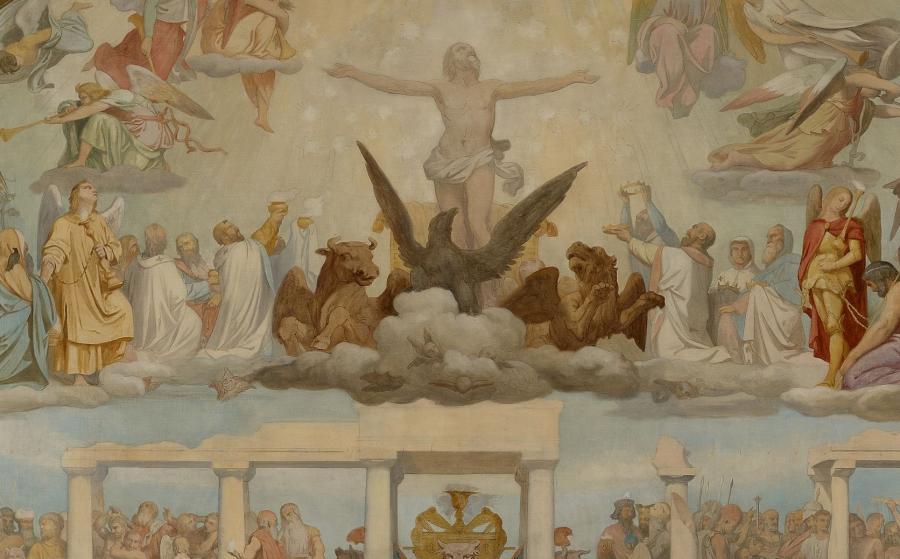Social Palingenesis
Information sur l’artiste
Paul Chenavard [Lyon, 1807 - Paris, 1895]

La Palingénésie sociale, vers 1850.
Image © Lyon MBA - Photo Alain Basset
In the wake of the 1848 revolution, Paul Chenavard received a commission from the French Second Republic to decorate the interior of the Pantheon in Paris, which was to be transformed into a 'temple of Mankind'. The artist embarked on this monumental project with the aim of illustrating the main stages in "the progress of Mankind into the future through trials and tribulations and a cycle of ruin and rebirth", also described by the term ‘palingenesis’. In order to execute this cyclical idea largely inspired by the philosophy of Friedrich Hegel and the writings of Pierre Simon Ballanche, a writer and philosopher from Lyon, Chenavard decided to cover the walls of the Pantheon with immense paintings in the form of monochromes. They retraced the history of mankind from the Flood to Napoleon. Several of these works are nowadays exhibited in the museum's chapel. The floor of the monument would have been decorated with other scenes figured in mosaics or enamelled lava stone.
This cartoon is the preparatory work for the main mosaic: set beneath the central cupola, it was to represent Social Palingenesis. The circular composition, which features more than 150 characters or symbols greatly influenced by freemasonry, is divided in three parts: the past, dominated by an image of Christ in Glory, angels, the symbols of the evangelists, and Greek and Norse gods; the present, with a syncretic image representing the various religions at the centre of a portico, characters from Antiquity and the Bible, along with great figures from modern times, and finally the future (this section is cut off, unfinished) which would have portrayed the return to chaos, a prelude to the rebirth of a superior form of the human race. However, in 1851 the Pantheon once again became a religious building and the project came to a halt. The decor was thus never put in place.
Oil on canvas
H. 303; L. 381,5 cm
Received from the French government in 1875; long term loan from the Centre national des arts plastiques
Inv. X 921-a





